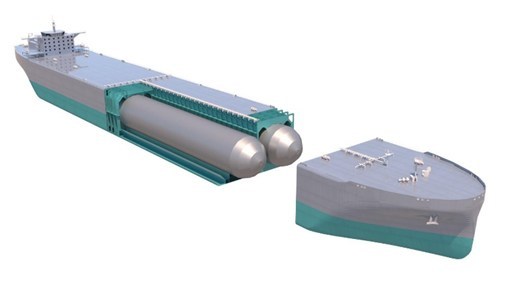Australian Global Energy Ventures (GEV) has signed a Memorandum of Understanding (MOU) with Ballard Power Systems for the development of a new fuel cell-powered ship, the C-H2 Ship, designed to transport compressed green hydrogen.
[smlsubform prepend=”GET THE SAFETY4SEA IN YOUR INBOX!” showname=false emailtxt=”” emailholder=”Enter your email address” showsubmit=true submittxt=”Submit” jsthanks=false thankyou=”Thank you for subscribing to our mailing list”]
The power required for a small-scale demonstration of the C-H2 Ship is expected to be under 10 MW, Ballard explained. At full scale, the C-H2 Ship will have a propulsion power requirement of approximately 26MW, and a containment system for storage of 2,000 tons of compressed green hydrogen.
Under the MoU, GEV will be responsible for design approvals, development, financing, and operation of C-H2 Ship, along with integration of the required power system. Ballard will be responsible for design of the fuel cell system for the C-H2 Ship and will assist GEV with integration of the fuel cell system into the vessel’s design.
This MOU is a significant step in our development of the Company’s C-H2 Ship, with hydrogen fuel cells now at the forefront of zero-emission technologies for shipping,
…said Martin Carolan, Executive Director of Global Energy Ventures.
Hydrogen and fuel cell technology provide a compelling path for the decarbonization of the maritime sector, explained Rob Campbell, Ballard Chief Commercial Officer.
Working with Global Energy Ventures will allow us to advance megawatt-scale hydrogen fuel cell and storage integration on board a large marine vessel.
In late 2020, GEV revealed plans to build the world’s first compressed hydrogen ship design, to transport clean, renewable energy. This was in line with the country’s National Hydrogen Strategy.
Today, hydrogen is gaining popularity as the pillar for the next generation of renewable energy sources to achieve ‘net-zero carbon’ targets. Numerous governments and corporations have now mandated that the future production of hydrogen will focus on green hydrogen using clean, renewable energy.






























































